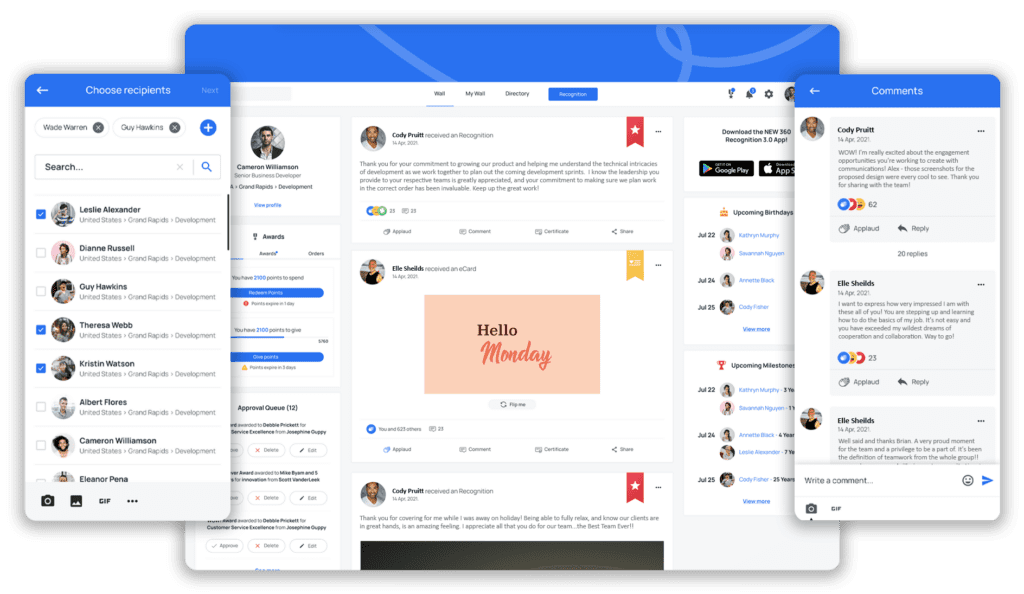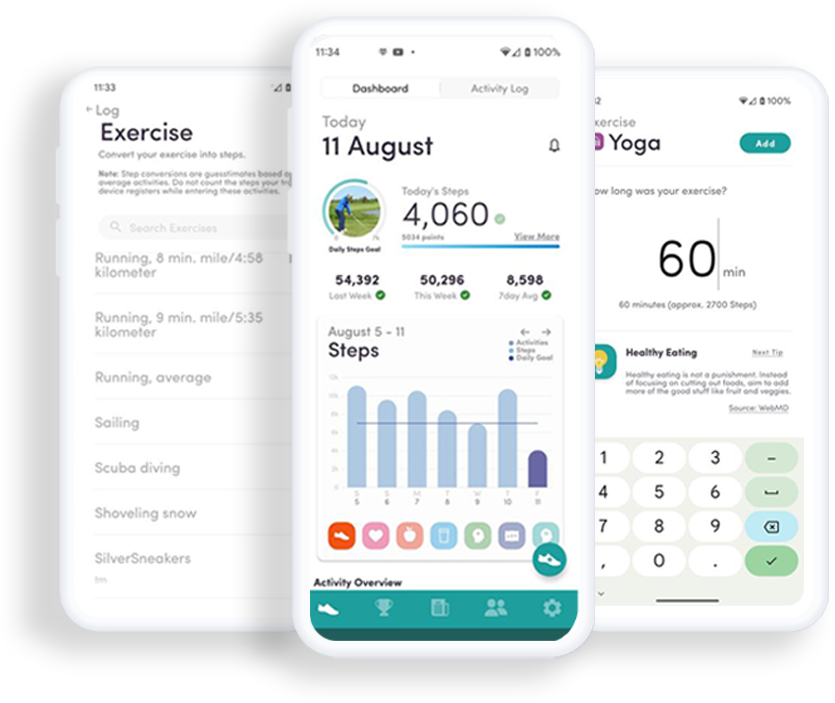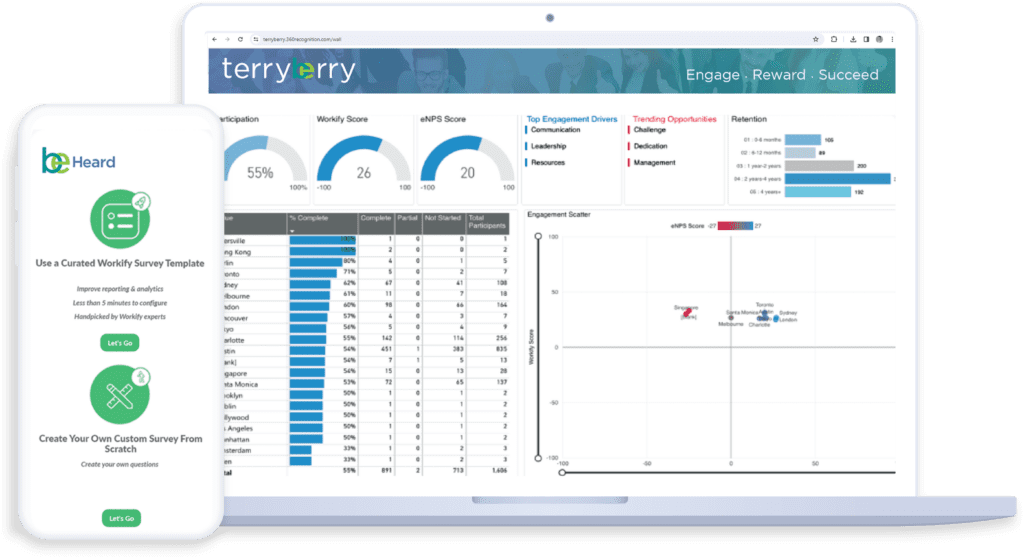February 19, 2024


Just about every HR department today understands how important employee engagement is - but knowing how much to set aside for an employee engagement budget is a different story.
Creating an employee engagement budget can vary greatly depending on the size of your organization, the specific initiatives you plan to implement, and your overall financial resources. Luckily, there are still some guidelines everyone can follow to ensure they're setting the right budget for their needs.
Here, we'll create a general guideline for creating an employee engagement budget and initiatives to consider.
What is an Employee Engagement Budget
An employee engagement budget is a financial plan specifically allocated for initiatives and activities aimed at improving employee engagement within an organization. This budget covers expenses related to various programs, events, and strategies designed to enhance employee satisfaction, productivity, morale, and overall company culture.
What to Consider for an Employee Engagement Budget
Employee engagement can cover a broad range of initiatives. Here are some common components to consider when determining your employee engagement budget.
Employee Recognition Programs:
Funds allocated for employee recognition programs, such as:
- a service awards program
- a pay raise structure
- Employee incentives for outstanding performance
- milestone achievements
- a peer-to-peer recognition program or social recognition platform


Training and Development:
Budget for training programs, workshops, seminars, or courses aimed at enhancing employees' skills, knowledge, and career growth opportunities. This may include both internal training resources and external training providers.
Wellness Programs:
Resources dedicated to promoting employee health and well-being, such as a corporate wellness platform, gym memberships, wellness workshops, health screenings, mental health resources, and initiatives promoting work-life balance.


Team Building Activities:
Funds for team-building events, outings, retreats, or activities aimed at fostering collaboration, communication, and camaraderie among employees.
Internal Communication Tools:
Budget for tools, software, or platforms facilitating internal communication and engagement, such as employee intranet systems, communication apps, or employee feedback platforms.
Employee Surveys and Feedback Mechanisms:
Resources allocated for conducting employee pulse and engagement surveys, assessments, or feedback mechanisms to gather insights into employee satisfaction, concerns, and suggestions for improvement.
RELATED: Top 10 Pulse Survey Software Tools and Complete Guide
Employee Assistance Programs (EAPs):
Funds for EAPs providing counseling, support services, and resources to help employees manage personal or work-related challenges, stress, or mental health issues.
Dedicated Personnel:
Budget for hiring or allocating personnel responsible for managing and implementing employee engagement initiatives, such as HR professionals, engagement specialists, or coordinators.
Events and Celebrations:
Funds for organizing employee appreciation events, milestone celebrations, holiday parties, or other social gatherings to recognize and celebrate employees' contributions and achievements.
Technology and Tools:
Budget for investing in technology, tools, or platforms that facilitate remote work, collaboration, and communication, especially in the context of hybrid or remote work environments.


How to Determine a Budget for Employee Engagement
An employee engagement budget can vary greatly depending on a few key areas, like the size of your organization, the specific initiatives you plan to implement, and your overall company budget. Here's a general guideline for creating a budget:
Assess Your Current Situation:
Evaluate your current employee engagement programs, if any, and determine their effectiveness. Be sure to identify areas that are working well and any areas where improvements can be made.
Some areas that can indicate whether or not your engagement program is effective are:
- Retention rate - A good employee retention rate typically varies by industry, company size, and other factors. However, in general, a retention rate above 80% is often considered good. This means that 80% or more of employees stay with the company over a specified period, usually a year.
- Employee Net Promoter Score (eNPS) - ENPS stands for Employee Net Promoter Score, which is a metric used to measure employee loyalty and engagement within an organization. It's based on the Net Promoter Score (NPS) framework, which is commonly used to measure customer loyalty.
- General Employee Feedback - Employee surveys are another great way to gauge employee engagement at your company. Send out periodic engagement and pulse surveys to gauge general sentiment and how employees feel.
Create SMART Goals:
Defining engagement program goals is crucial. Without goals, it'll be difficult to accurately allocate funds, track program effectiveness, and change over time.
Just be sure your goals are specific, measurable, achievable, relevant, and timely (SMART). These could be centered around improving employee satisfaction, increasing productivity, reducing turnover, or fostering a positive company culture.
Regardless, knowing what you want to achieve will help you determine the right budget for your initiatives.


Allocate and Prioritize Resources:
Determine how much you can realistically allocate to employee engagement initiatives. This may include funds for events, activities, employee rewards and recognition programs, training, software/tools, and personnel dedicated to managing engagement efforts.
Based on your goals and budget, prioritize the initiatives that will have the greatest impact on employee engagement. Consider both low-cost/high-impact initiatives and more substantial investments that may yield long-term benefits.
Consider Budgeting Structures:
There are a few different structures that are commonly used to help guide the budgeting process:


Percent of payroll - One way to budget for employee engagement programs is to allocate 1% to 2% of your payroll expenses. So, if you allocate $900,000 per year for payroll, you should set aside at least $9,000 (1%) for your engagement program budget.
Then, break that annual number down by quarter or month. For each quarter you would have $2,250 to spend on the program. Then, figure out how many employees will be participating. If you have 15, you would be spending $150 per quarter or $600 per year on each employee.
Per Years of Service - A years-of-service or milestone program is a common type of employee recognition program. One way to budget for this type of engagement program is to allocate a dollar amount for each year an employee is with your company.
Terryberry recommends allocating around $35 per year of service. So, an employee celebrating 10 years with your company would be awarded a gift valued at $350.
Per Employee - Another great budgeting option is to calculate based on headcount. With this method, you’ll start by estimating how much you’d like to spend on each employee in the year.
From there, you’d simply multiply that amount by the number of employees you have.
According to Recognition Professionals International, the average budget for employee recognition per employee is $30-$50. High-performing companies can average up to $150 per employee (not including service awards).
Check In Regularly
As with any engagement initiative, it's important to check in with your employees and ensure that your efforts are achieving the goals you established. One way to do this is with employee engagement surveys.
Send out short pulse surveys on a fairly frequent, regular basis to ensure you're staying in touch with your employees in real time. Then, send out more in-depth engagement surveys every 6-months to a year. This will allow you to be more agile with your budget too so you can make necessary adjustments quickly.


Flexibility:
Remain flexible with your budget as needs and priorities may change over time. Be prepared to reallocate resources as necessary to maximize the impact of your employee engagement efforts.
Remember that employee engagement is not just about spending money—it's also about creating a positive work culture, fostering open communication, providing opportunities for growth and development, and recognizing and rewarding employees for their contributions.
Therefore, budgeting for employee engagement should encompass both financial investments and non-monetary efforts to create a supportive and engaging workplace culture.
Why Employee Engagement Matters
Engaged employees are a significant asset to any organization, as they contribute positively to various aspects of the company's operations and culture. Some of the key benefits of having engaged employees include:


Increased Productivity: Engaged employees are more motivated and committed to their work, resulting in higher employee productivity levels. They are willing to go the extra mile to accomplish tasks and meet organizational goals.
Better Customer Satisfaction: Engaged employees are more likely to provide excellent customer service. Their positive attitude and dedication to their work translate into better interactions with customers, leading to increased satisfaction, loyalty, and an improved customer satisfaction rate.
Higher Employee Retention: Engaged employees tend to have stronger ties to their organization, reducing employee turnover rates. They are more likely to stay with the company for the long term, saving on recruitment and training costs associated with turnover.
Enhanced Innovation and Creativity: Engaged employees are more likely to actively participate in problem-solving and innovation efforts. They feel a sense of ownership and are willing to share their ideas, leading to a more innovative workplace and long-term business growth.


Better Collaboration and Teamwork: Engaged employees are more collaborative and willing to work together towards common goals. They foster a positive work environment where teamwork is valued, leading to better communication and cooperation among team members.
Reduced Absenteeism: Engaged employees are more committed to their jobs and are less likely to take unnecessary time off. They have higher levels of job satisfaction, which translates into reduced absenteeism.
Positive Organizational Culture: Engaged employees help improve company culture characterized by trust, respect, and open communication. They serve as role models for their peers and help reinforce desirable values and behaviors within the company.
Increased Profitability: Ultimately, engaged employees contribute to the bottom line by driving revenue growth and cost savings. Their higher productivity, better customer service, and lower turnover rates all contribute to improved financial performance for the organization.
Overall, investing in an employee engagement program can lead to a range of benefits that positively impact both the employees and the organization as a whole.
Getting Started
Setting an employee engagement budget involves careful consideration of various factors, including the size of your organization, current engagement levels, available resources, and desired outcomes.
If you’re interested in learning more about Terryberry’s employee recognition platform, contact us today to set up a demo. See how our platform incorporates social recognition, performance awards, milestone awards, and barrier-free communication all under one streamlined platform.


